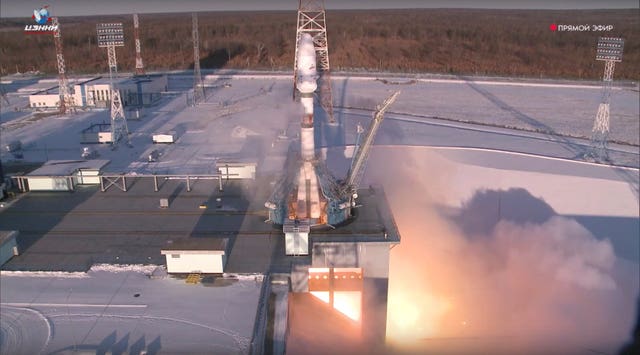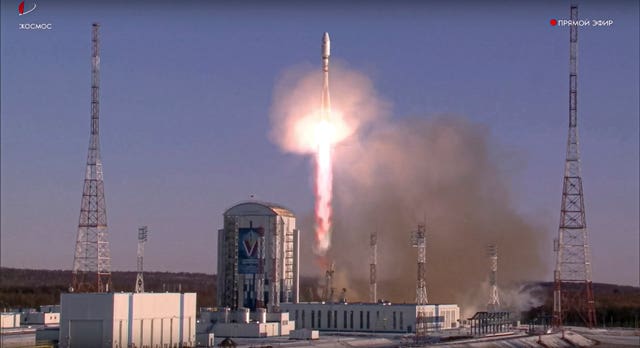The Soyuz rocket blasted off on schedule Tuesday from the Vostochny launch pad in far eastern Russia and placed its payload into a designated orbit nine minutes after liftoff.
It was carrying two Russian Ionosphere-M Earth observation satellites and several dozen smaller satellites, including the two Iranian ones.
Iran’s two satellites, named Kowsar and Hodhod, were the first launched on behalf of the country’s private sector.

In 2022, a Russian rocket launched an Iranian Earth observation satellite called Khayyam, which was built in Russia at the behest of Tehran. In February, Russia launched another Iranian satellite, called Pars-1.
Tuesday’s launch comes as Russia and Iran have expanded ties in various spheres.
Ukraine and the West have accused Tehran of providing Moscow with hundreds of explosive drones for use on the battlefield in Ukraine and helping start their production in Russia.
Iranian drone deliveries, which Moscow and Tehran have denied, have enabled a sustained barrage of long-range drone strikes on Ukraine’s infrastructure.
Moscow and Tehran plan to strengthen ties with a “comprehensive strategic partnership” to be signed during Iranian President Masoud Pezeshkian’s planned visit to Russia. A date for that visit has not been set, but the Kremlin said it could happen soon.
Tuesday’s successful launch of Iranian satellites atop a Russian rocket follows a string of failed launches suffered by Iran’s civilian space program in recent years. There have been five consecutive failed launches of the Simorgh program, a satellite-carrying rocket.
A fire at the Imam Khomeini Spaceport in February 2019 killed three researchers, authorities said at the time.
An explosion at a missile site later that year caught the attention of then-President Donald Trump, who mocked Iran with a tweet showing what appeared to be a US surveillance photo of the site.

At the same time, a separate Iranian space program run by the country’s paramilitary Revolutionary Guard has seen successful launches from a military base outside Shahroud, 215 miles east of the capital Tehran.
Satellite images analyzed by The Associated Press show Israel may have bombed the site during its Oct. 26 retaliatory strike against Iran.
A global threat assessment by the US intelligence community this year said Iran’s development of satellite launch vehicles would “shorten the timeline” for Iran to develop an intercontinental ballistic missile because it uses similar technology.
ICBMs can be used to deliver nuclear weapons.
Iran is now producing near-weapons-grade uranium after the collapse of its nuclear deal with world powers.
Tehran has enough enriched uranium for “several” nuclear weapons if it decides to build them, the head of the International Atomic Energy Agency (IAEA) has warned.
Iran has always denied seeking nuclear weapons and maintains that its space program, as well as its nuclear activities, are for purely civilian purposes.
US intelligence agencies and the IAEA say Iran had an organized military nuclear program by 2003.

